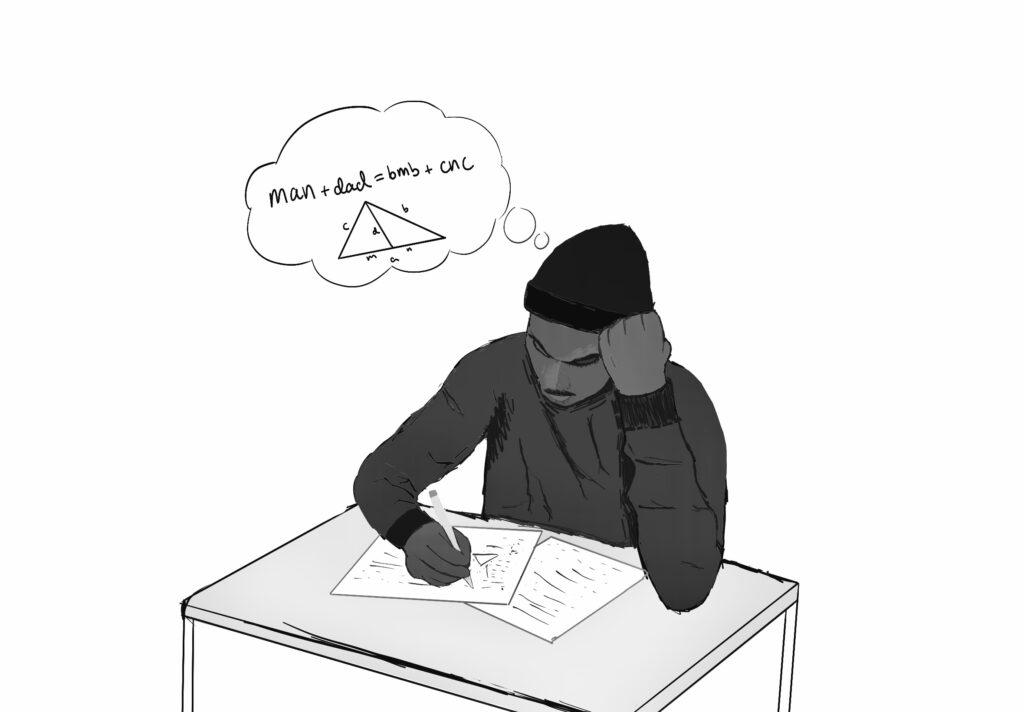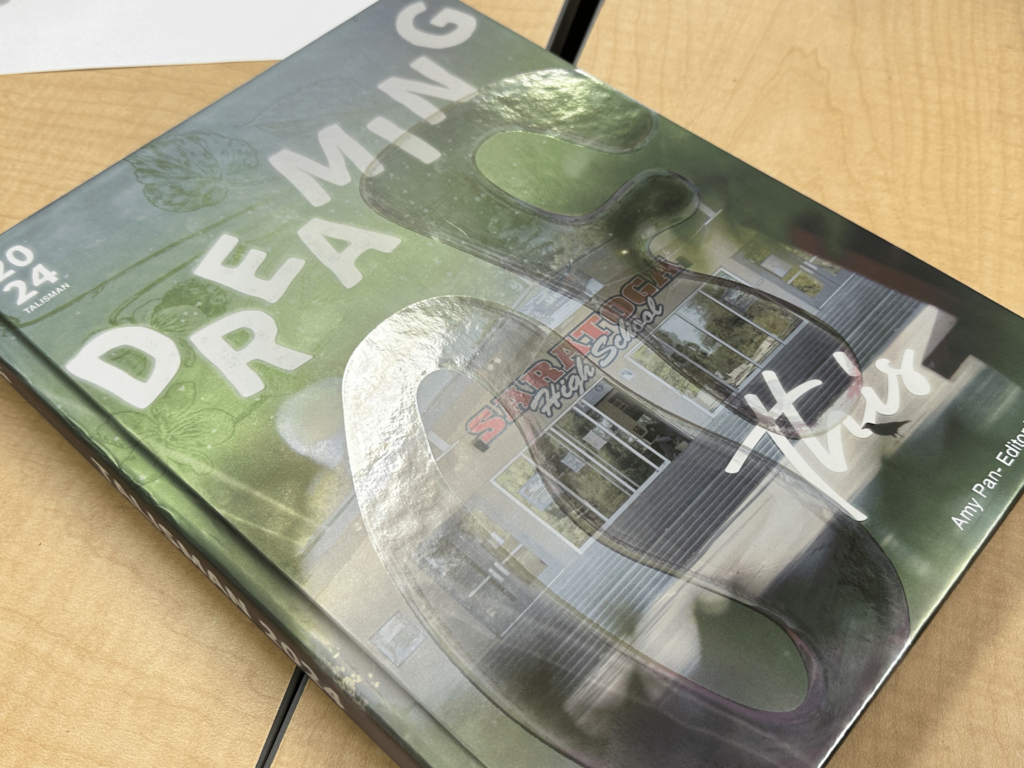USA Team Selection Tests (TSTs) are 4.5-hour, 3-question tests that are used as a key determining factor in selecting the International Math Olympiad (IMO) team and European Girls’ Math Olympiad (EGMO) teams. Few students are advanced enough to take them, with only 38 students across the nation taking the TST this year.
The top six scorers will be selected for the IMO team, which will be announced in late April. The first two tests were also used to determine the top four female participants, who make up the nation’s EGMO team.
Among the 38 test takers were seniors Advaith Avadhanam and Victoria Hu, who took two out of six TSTs on Dec. 17 and Jan. 11 in an office conference room, proctored by guidance counselor and math club adviser Brian Safine.
There are four remaining exam dates for IMO selection, which will take place in March.
Earlier during the winter Olympiad season, Hu also participated in a separate contest, the Math Prize for Girls Olympiad, where she received a bronze medal.
Avadhanam aims for a highly coveted spot on IMO team
For Avadhanam, the chance to participate in TST with a shot at the IMO team is the culmination of years of effort. Since he’s been studying competitive math since 6th grade and placed 10th in last year’s TST cycle, he hopes his experience will play a contributing factor in increasing his chances of qualification.
To compete in the TSTs, students must first undergo an extensive series of qualifying contests. They must meet the cut-off for at least one of the two-part American Mathematics Competition (AMC), which qualified Avadhanam for the American Invitational Mathematics Examination (AIME). Test takers must score well enough on the AIME to qualify for the United States of America Junior Math Olympiad (USAJMO) and the United States of American Mathematical Olympiad (USAMO), which receive roughly 250 students each. Typically, the top 15 USAJMO takers and the top 45 USAMO scorers can then move on to take the Team Selection Test Selection Test (TSTST). Finally, the TST is administered to the roughly top 30 scorers on the TSTST.
Each three-question TST exam covers various topics, including algebra, geometry, number theory and combinatorics. The test prohibits the use of a calculator but according to Avadhanam, the test doesn’t require much computation, instead focusing more on problem-solving.
“These problems supposedly can be solved with high school methods, but you’re not going to learn how to solve these problems in class, because they’re extremely difficult,” Avadhanam said.
The questions are written with increasing difficulty and test takers are required to write a complete proof for each question. The proofs are scored on a scale from 0-7 with 7 being completely correct and 1 being not anything meaningful. Although partial credit is given, Avadhanam said the graders are strict and many incomplete solutions are often given a 0. If a student solves 75% of a proof correctly, it would still likely receive a 2 or 3.
“When you’re stuck, the best thing to do is to move to a different problem and then come back,” he said. “You’re not going to get out of your trap unless you try something else. And regarding time constraints, there isn’t time pressure per se, but there is stress which can cause last-minute scrambles.”
So far, he feels neutral about his performance on the first two TSTs and hopes to eventually make IMO this year.
“I’ve done OK so far, but I’m hoping the next few TSTs will be decisive,” Avadhanam said. “If the nature of these tests is relatively easy, there’s a gap of a few points separating 15 people sometimes, which is quite crazy given that there are only six spots.”
Hu participates in TST and wins medal at Math Prize for Girls Olympiad
Hu has progressed from competing in fast-paced computational tests to Olympiads over the years; she feels that being able to participate in the TST in December and January was a highlight of her competitive math career. She wanted to clarify that she didn’t qualify for it in the same way as Avadhanam, however. Avadhanam is part of the IMO team selection pool while Hu was part of the EGMO team selection pool, which comprised the top 18 girls from the TSTST.
Regardless, Hu said she feels thankful that she was able to cap off her Olympiad math journey with an exciting test at the national level.
“I am grateful for the rare opportunity to participate in these contests since I don’t have many left,” she said.
One of the other Olympiads Hu has competed in recently is the Math Prize for Girls (MPFG) Olympiad, the final round of the MPFG contest series.
In October, Hu first participated in the Math Prize for Girls (MPFG) contest in Boston as one of seven participants from SHS — all attendees had to place within the top 200 girls from the AMC in order to qualify.
After competing at MPFG and placing within the top 45 contestants, Hu then qualified for the MPFG Olympiad alongside junior Ishani Agarwal and freshman Vivian Zhong; the three of them took a 4-hour, 4-problem proof-based contest held at the end of November. Hu scored in the top 20, and received a bronze medal.
Throughout middle and high school, Hu has spent hours every week preparing for computational contests like AMC and AIME as well as Olympiads like USAJMO, which she believes helped her performance at the MPFG contest itself. This idea aligns with Hu’s overall belief that a commitment to foundational contests lays the groundwork for success in others: She didn’t prepare for the MPFG contest specifically, instead relying upon her experience from prior contests she participated in.
Hu additionally offered advice for aspiring mathletes.
“For people who want to do math contests, I would recommend starting fairly early because I found that it took a while to build up intuition and experience,” she said.
Hu emphasizes that success in math contests stems from years of passion, dedication and patience, rather than an innate ability to effortlessly solve problems.
“I think a misconception people have is that math contest kids just look at a problem and know how to solve it, which is only true in speed-based competitions,” Hu said. “For me, it’s always a struggle to wrack my brain for potential ideas during Olympiads, but once you crack a tough problem, it’s extremely rewarding. There’s no feeling like it.”



























